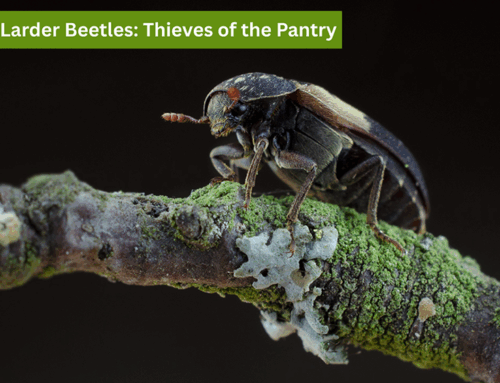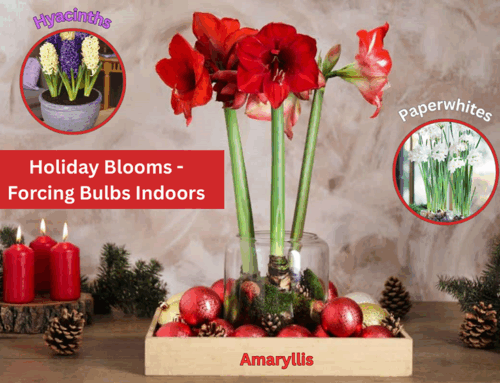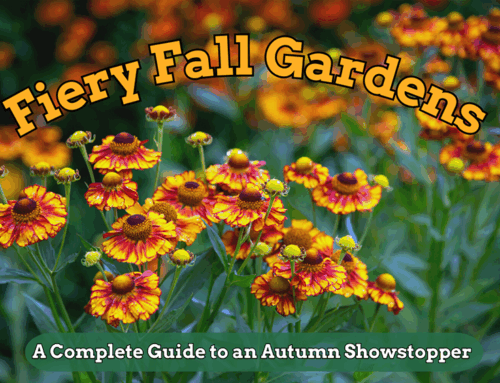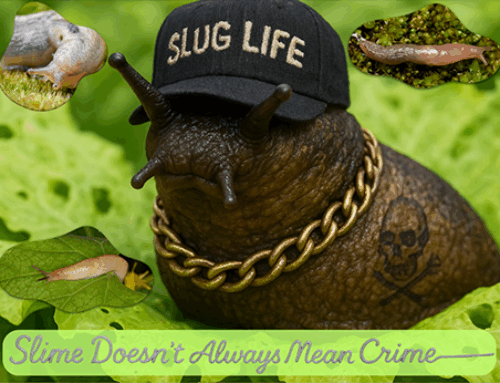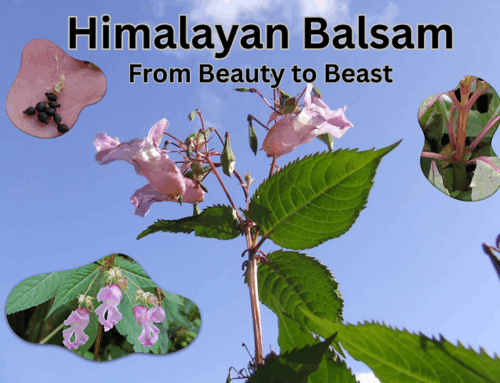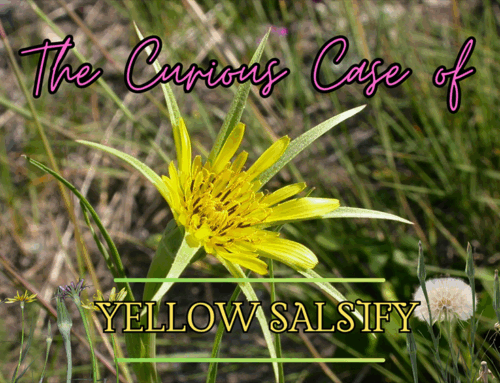Thistles: Noxious Weeds or Prohibited Noxious Weeds?
by Brett Kerley
Thistles are among the most aggressive invasive plants in Alberta, posing significant threats to agriculture, biodiversity, and natural ecosystems. Under the Alberta Weed Control Act and Alberta Weed Control Regulation, some thistle species are classified as prohibited noxious weeds and others as noxious weeds.
Although thistles are invasive weeds, they do have some benefits:
- Pollinator Support – Thistle flowers produce nectar that attracts bees, butterflies, and other pollinators.
- Soil Stabilization – Their deep roots help prevent soil erosion and improve soil structure.
- Wildlife Habitat – Birds, particularly goldfinches, use thistle seeds as a food source and sometimes as nesting material.
- Medicinal Uses – Some species, like milk thistle, are used in herbal medicine for liver support.
- Biodiversity Contribution – In their native habitats (which are not here!), thistles provide food and shelter for a variety of insects and animals.
Despite these benefits, invasive thistles can outcompete native plants, making proper management necessary in areas where they become a problem.
So, let’s look at the thistles listed in the Alberta invasive plant guide.
Definitions
Prohibited Noxious Weed
Plants in this category are either not currently found in Alberta or are found in so few locations that eradication could be possible. Under the Weed Control Act gardeners and landowners have a responsibility to destroy a prohibited noxious weed.
Noxious Weed
Plants listed in this category are considered too widely distributed to eradicate. A local authority may conduct control programs for these weeds if they feel they may have significant ecological or economic impact on lands within their municipality. Gardeners and land owners should remove these weeds as much as possible and take steps to prevent further spread.
Canada Thistle (Cirsium arvense)
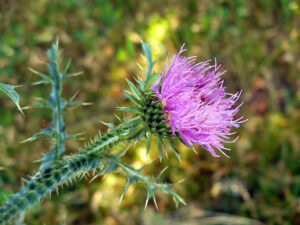
Canada Thistle (Cirsium arvense)
Category: Noxious
Description:
Canada thistle is a perennial plant with creeping root systems that allow it to spread aggressively. It has spiny, lobed leaves and small purple flower heads. It is commonly found in agricultural fields, roadsides, and disturbed areas. I put this one as #1 because this is the most prevalent thistle that is found in the Edmonton area.
Life Cycle:
Canada thistle grows from underground rhizomes and produces flowers from early summer to fall. It spreads both by seed and vegetatively through its root system, making it particularly difficult to control. I try to get out in my yard several times a week, not always to weed but always to observe what’s going on. Back a few years ago, I got a warning from the city’s bylaw officers to control my thistle, or I’d be fined. Yes, indeed I did have thistles growing under my spruce tree but they were about 3 inches tall because I’d pull them weekly, to keep them under control. However, less than a block down the street, the city maintained greenspace had thistles about my waist height and in flower. Hmm….where did my thistles come from I wonder. It makes me mad to this day, to think about that incident. I haven’t received any further notices since then, so perhaps it was just a disgruntled neighbour not liking my garden transformation, as I went from patchy grass to a wildlife yard with no grass at all. Who knows?
Control Methods:
- Mechanical: Cutting or mowing before flowering can reduce spread, but it may regrow from roots. Pulling them after a nice rainfall is really satisfying.
- Chemical: Herbicides like clopyralid and aminopyralid are effective when applied at the bud stage. In the past, I have painted the leaves with Roundup and that seemed quite effective.
- Cultural: Encouraging competition from desirable plants can help suppress growth.
Marsh Thistle (Cirsium palustre)
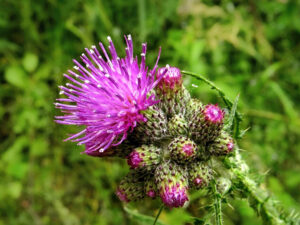
Marsh Thistle (Cirsium palustre)
Category: Prohibited Noxious
Description:
Marsh thistle is a tall, spiny, biennial or short-lived perennial plant that can grow up to 1.5 meters in height. It has dark green, deeply lobed, spiny leaves and produces small purple flower heads arranged in clusters. It thrives in wetlands, ditches, and other moist habitats.
Life Cycle:
Marsh thistle typically germinates in the spring, growing as a rosette in its first year. It bolts and flowers in the second year, producing seeds that are dispersed by wind. Some plants may persist longer if conditions are favorable.
Control Methods:
- Mechanical: Cutting or mowing before flowering prevents seed production.
- Chemical: Herbicides containing glyphosate or clopyralid are effective.
- Cultural: Enhancing native vegetation in wetlands can suppress its growth.
Nodding Thistle (Carduus nutans)
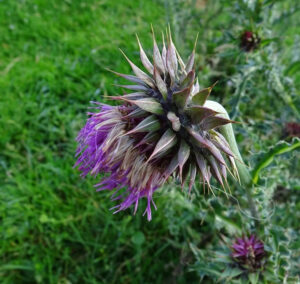
Nodding Thistle (Carduus nutans)
Category: Prohibited Noxious
Description:
Nodding thistle, also known as musk thistle, is a biennial plant that can grow up to 2 meters tall. It has deeply lobed, spiny leaves and large, drooping, purple flower heads. It is commonly found in disturbed areas such as roadsides and pastures.
Life Cycle:
Nodding thistle spends its first year as a rosette, storing energy in its roots. In its second year, it bolts, flowers, and produces seeds that are dispersed by wind. Each plant can produce thousands of seeds, leading to rapid spread.
Control Methods:
- Mechanical: Hand-pulling or mowing before flowering can reduce seed production.
- Chemical: Herbicides like 2,4-D or dicamba are effective in the rosette stage.
- Cultural: Encouraging the growth of competitive vegetation can limit its spread.
Plumeless Thistle (Carduus acanthoides)
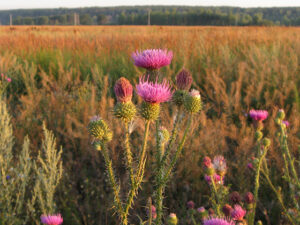
Plumeless Thistle (Carduus acanthoides)
Category: Prohibited Noxious
Description:
Plumeless thistle is a biennial plant similar to nodding thistle but with smaller flowers and more spiny leaves. It can grow between 1 to 1.5 meters tall and is typically found in pastures, roadsides, and disturbed soils.
Life Cycle:
Plumeless thistle follows a biennial cycle, forming a rosette in the first year and flowering in the second year. It produces wind-dispersed seeds that contribute to its rapid spread.
Control Methods:
- Mechanical: Regular mowing or hand-pulling before flowering is effective.
- Chemical: Herbicides like 2,4-D are useful in early growth stages.
- Cultural: Establishing dense, competitive vegetation can help suppress growth.
Perennial Sow Thistle (Sonchus arvensis)
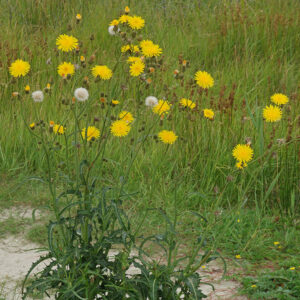
Sow thistle (Sonchus arvensis)
Category: Noxious
Description:
Perennial sow thistle is a creeping-rooted perennial that resembles dandelions but has spiny leaves. It produces yellow flowers and thrives in agricultural fields, roadsides, and disturbed sites.
Life Cycle:
This plant spreads aggressively via both wind-dispersed seeds and underground rhizomes. It flowers throughout the summer, producing a significant number of seeds that enhance its rapid spread.
Control Methods:
- Mechanical: Frequent mowing or tillage can help weaken root reserves.
- Chemical: Herbicides such as glyphosate or dicamba can be effective, especially when applied during active growth.
- Cultural: Promoting healthy vegetation cover can reduce its establishment.
Control and Management Strategies
The presence of these thistle species requires proactive management efforts, including:
- Integrated Weed Management (IWM): Combining mechanical, chemical, and biological control methods for effective long-term management.
- Regular Monitoring: Frequent site inspections help detect and address infestations early.
- Public Awareness and Reporting: Educating landowners and the public on identifying and reporting noxious weeds supports early detection and eradication.
Conclusion
The aggressive spread of these thistles can negatively impact local ecosystems and agriculture. By employing effective control measures, landowners and municipalities can help prevent their establishment and protect native plant communities. Proper identification, timely intervention, and adherence to Weed Control Regulations are key to managing them.
For more information on prohibited noxious weeds visit the Alberta Government website here: https://open.alberta.ca/publications/prohibited-noxious-weeds-information-sheets. Noxious weed information sheets are here: https://open.alberta.ca/publications/noxious-weeds-information-sheets.
And there you have it—your crash course in the wild, rebellious world of thistles. Whether you choose to wage war against them or secretly admire their tenacity, one thing’s for sure: thistles will always find a way. So, the next time you spot one standing tall and spiky in your yard, take a moment to respect the hustle. After all, in the grand garden of life, we’re all just trying to grow in unexpected places—some of us just come with a few more prickles. Happy weeding (or not)!


